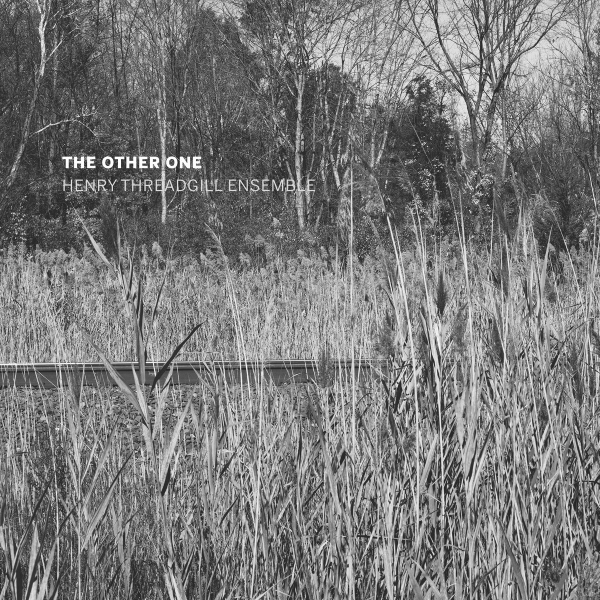Blues originated from the African-American tradition. This musical style embodies the hardships and experiences of African-American culture. Over the course of more than a century, many talented musicians have imbued blues with their own philosophy of life and music. In this article, we are going to take a look at the 25 best blues guitarists who shaped the blues music we experience today.
Read MoreThe 10 Best Jazz Bassists
The bass has a unique and crucial role in the world of jazz. It’s not just about providing the foundation for the rhythm section; the bass must be a beating pulse for the sound, adding melody and crafting narratives whilst redefining the boundaries of the instrument.
In this list, we pay tribute to 10 of the best jazz bassists ever to pluck the four strings.
Read MoreBest of Miles Davis Albums
Miles Davis was a transformative figure in the world of jazz, pushing boundaries and frequently reinventing the genre throughout his career. From his early bebop recordings in the 1940s to his groundbreaking explorations of modal jazz, fusion, and electronic music in the following decades, Davis constantly challenged conventions and created innovative and influential music.
His talent as a trumpeter, composer, and bandleader, combined with his restless spirit of experimentation, solidified his status as one of the most important and iconic figures in the history of jazz.
Here we tackle the most unenviable of tasks: the 10 best Miles Davis albums.
Read MoreBest of John Coltrane Albums
John Coltrane, a towering figure in the realm of jazz, left an indelible mark on the music world with his revolutionary approach and boundless creativity. From his early days as a sideman with luminaries like Dizzy Gillespie and Miles Davis to his prolific career as a bandleader, Coltrane pushed the boundaries of jazz and redefined its possibilities.
Read MoreWhat Was the Jazz Age?
The Jazz Age refers to a cultural and artistic movement in the United States during the 1920s. It was characterized by a significant shift in the social and cultural landscape, with a newfound sense of liberation, hedonism, and artistic experimentation. The term “Jazz Age” appeared during the late 1910s but was set and further popularized once used by writer Francis Scott Fitzgerald in 1922.
The Jazz Age: The 1920s
During the Jazz Age, jazz music was gaining widespread popularity and became the symbol of the era. Jazz’s energetic and improvisational nature resonated with the youthful and rebellious attitudes of the time. Jazz clubs and speakeasies flourished, providing venues for musicians to perform and people to socialize.
This period of time is often associated with a sense of glamour, excess, and a “roaring” atmosphere of parties and social gatherings. It was a moment of cultural dynamism and artistic innovation, with notable figures emerging as influential jazz musicians.
The concept of albums, as we know them today, did not exist at the time. The Jazz Age predominantly saw the release of individual songs or compositions as singles, typically on 78rpm records. These records could hold only a few minutes of music on each side.
However, it is worth noting that during the Jazz Age, some artists did compile their recordings into collections or anthologies, but these were often released as sets of separate records or compilations rather than a single cohesive album. The focus was primarily on individual songs or performances rather than extended bodies of work released together on a single album.
So, for once, instead of listing albums, we will here give a selection of 10 key recordings of the Jazz Age.
10 of the Best Recordings of the Jazz Age
1. “Savoy Blues” by Kid Ory’s Creole Jazz Band (1921)
“Savoy Blues” holds great importance in the history of jazz. As one of the earliest recorded jazz pieces, it provides a glimpse into the nascent stages of the genre. The recording features Kid Ory’s exceptional trombone playing, characterized by robust rhythms and a distinct growling sound that would later become synonymous with New Orleans-style jazz. “Savoy Blues” contributed to the development of jazz traditions, with its rhythmic drive, syncopation, and bluesy elements leaving a lasting impact on the genre. Moreover, as an African-American-led ensemble, Kid Ory’s Creole Jazz Band played a significant role in championing the musical traditions of the African American community and preserving their cultural legacy. It definitely stands as a testament to the early pioneers of jazz and their invaluable contributions to American music.
2. “Dippermouth Blues” by King Oliver’s Creole Jazz Band (1923)
“Dippermouth Blues” represents another early milestone in the genre, showcasing the New Orleans style with collective improvisation and syncopated rhythms. The recording’s popularity helped introduce jazz to a wider audience, spreading its appeal beyond New Orleans. “Dippermouth Blues” exemplifies the collaborative spirit and ensemble dynamics of early jazz, leaving a lasting impact on the evolution of the genre and serving as a reference point for future jazz recordings.
3. “Charleston” by James P. Johnson (1923)
“The Charleston” became synonymous with the dance craze of the same name, which swept the nation during the 1920s. The lively and infectious tune, characterized by its syncopated rhythms and catchy melodies, captured the spirit of the Jazz Age and became a cultural phenomenon. “The Charleston” played a pivotal role in popularizing the dance and forever cemented James P. Johnson’s name as one of the key contributors to the jazz and dance music of the era.
4. “St. Louis Blues” by Bessie Smith (1925)
“St. Louis Blues” by Bessie Smith, recorded in 1925, holds immense importance in the realm of blues and popular music. As one of the defining recordings of the classic blues era, it embodies the powerful and emotive vocal prowess of Bessie Smith, often regarded as the “Empress of the Blues.” The record became an unprecedented commercial success, propelling Bessie Smith to national prominence but also symbolizing the enduring power of the blues as an art form and its profound impact on American music.
5. “Sugar Foot Stomp” by Fletcher Henderson and His Orchestra (1925)
“Sugar Foot Stomp” is regarded as one of the earliest and most influential examples of big band jazz arrangements, with Fletcher Henderson’s innovative orchestration setting a new standard for large jazz ensembles. The recording bridged the gap between early New Orleans-style jazz and the more structured arrangements of the Swing Era. It also had a profound impact on Count Basie, inspiring his own musical style and future contributions to the genre.
6. “Black Bottom Stomp” by Jelly Roll Morton and His Red Hot Peppers (1926)
“Black Bottom Stomp” exemplifies the fusion of jazz and ragtime. The recording showcases Morton’s innovative piano playing and his skillful arrangements. It also captures the spirit of the Black Bottom dance, a popular dance style of the time. “Black Bottom Stomp” is considered one of the earliest examples of a jazz composition being recorded as a standalone piece.
7. “East St. Louis Toodle-Oo” by Duke Ellington and His Washingtonians (1927)
“East St. Louis Toodle-Oo” recorded in 1927, co-written by Ellington and his cornetist Bubber Miley, boasts the innovative use of muted horns, specifically the plunger mute, creating a distinctive and growling sound. This unique sound became a hallmark of Ellington’s style and contributed to the development of the “jungle sound,” an evocative and influential component of early jazz.
“East St. Louis Toodle-Oo” was a breakthrough hit for Ellington, earning him recognition and establishing him as a prominent figure in the jazz world. Furthermore, “East St. Louis Toodle-Oo” is significant in its representation of the African American experience and the emergence of Black artists in the jazz genre. The composition reflects Ellington’s ability to infuse elements of his cultural heritage and personal experiences into his music, contributing to the ongoing legacy of jazz as an expression of Black creativity and cultural identity.
8. “Singin’ the Blues” by Frankie Trumbauer and His Orchestra featuring Bix Beiderbecke (1927)
Bix Beiderbecke’s lyrical and innovative cornet playing, characterized by a smooth tone and inventive phrasing, set him apart as a unique jazz musician. The collaboration between Frankie Trumbauer and his Orchestra resulted in inventive arrangements that added a distinctive texture to the composition. “Singin’ the Blues” achieved both critical acclaim and commercial success, introducing a wider audience to Beiderbecke’s artistry.
9. “West End Blues” by Louis Armstrong and His Hot Five (1928)
Louis Armstrong’s groundbreaking use of tone, phrasing, and melodic invention revolutionized jazz trumpet technique. Here, the opening cadenza, with its virtuosic display and expressive power, is particularly notable and has become one of the most iconic moments in jazz history. “West End Blues” also introduced scat singing to a wider audience.
The band’s tight ensemble playing, innovative use of dynamics, and the interplay between the musicians create a rich and vibrant musical landscape. Indeed, “West End Blues” is a testament to the emotional power of jazz. Armstrong’s trumpet evokes a wide range of emotions, from deep melancholy to infectious joy. The recording exemplifies the ability of jazz to convey profound human expression and serves as a testament to Armstrong’s unique ability to communicate through his music.
10. “Apex Blues” by Jimmie Noone and his Apex Club Orchestra (1928)
“Apex Blues” is a classic representation of Chicago-style jazz, featuring Noone’s mesmerizing clarinet playing and the distinctive sound of his band. His playing style, influenced by traditional New Orleans musicians and the emerging jazz trends of the time, helped shape the sound of the early jazz clarinet. The recording captures the energy and excitement of the Jazz Age, reflecting the exuberance and creativity of the era.
The Playlist “Jazz Age”
You can listen to all these recordings plus 10 extra on the dedicated Spotify Playlist “Jazz Age”.

From the syncopated melodies that flowed through smoky clubs to the flappers who dared to challenge convention, the Jazz Age embodied a spirit of rebellion, innovation, and artistic expression. It was an epoch where the soulful sounds of Louis Armstrong’s trumpet, the languid voice of Bessie Smith, and the groundbreaking compositions of Duke Ellington merged to create a vibrant soundtrack for a generation yearning for freedom. It was a time of flourishing creativity, marked by the indelible imprint of countless talented musicians, artists, and writers who etched their names into the fabric of history.
As the echoes of the Jazz Age reverberate through time, we continue to be captivated by its allure. Its legacy has left an indelible mark on the evolution of music, fashion, literature, and cultural norms, shaping the course of modernity. The Jazz Age teaches us the power of artistic expression, the audacity to challenge societal boundaries and the eternal pursuit of the sublime.
Henry Threadgill – The Other One
The Other One is an album by Pulitzer Prize winner Henry Threadgill. It was a multimedia piece involving film, paintings, photographs, electronics, voice loops, and both noted and improvised orchestral music, performed and recorded live at Roulette Intermedium in Brooklyn, New York, in May 2022. Two performances were held on two different evenings: “The One,” and “The Other One.” This album is the recording of the second evening, hence its name. It was released on May 26, 2023, by Pi Recordings.
Read MoreJazz June 2023
What should you expect from jazz this month? Welcome to our June 2023 selection of albums that have already been or will soon be released this month. These albums grabbed our full attention, and they are worth your time. They are listed in order of release date.

The 10 Best Indo Jazz Albums
Prepare to immerse yourself in the enchanting sounds of Indo Jazz. With its mesmerizing amalgamation of Indian classical music’s rich traditions and the improvisational spirit of jazz, Indo Jazz has birthed a treasure trove of remarkable albums over the years.
We will uncover here for you the 10 Best Indo Jazz Albums that have captivated audiences and pushed the boundaries of musical expression. From the soulful melodies of Indian ragas intertwining with the grooves of jazz rhythms to the spellbinding improvisations that transcend borders, each album on this list represents a unique fusion masterpiece. So let’s delve into these extraordinary albums:
Read MoreJazz May 2023
The current diversity, scope, and quality of jazz are incredible. Just listen to the following selection of records that will be released in May 2023! With only these 10 albums, it feels like we have enough material to enjoy endless jazz for a full year!
However, if you think we forgot a must-listen release, then please add it to the comments below. Thank you!
The albums are ordered by their release date.
Read MoreWhat is Indo Jazz?
In the vast realm of music, where cultures intermingle and genres evolve, there exists a fascinating fusion that transcends boundaries and captivates listeners with its mesmerizing melodies and vibrant rhythms. It is the captivating world of Indo Jazz, a harmonious marriage between the traditional sounds of Indian classical music and the improvisational spirit of jazz. As the sitar dances with the saxophone, and tabla beats find harmony with upright basslines, a unique and enchanting musical landscape emerges, blending East and West in a remarkable display of artistic synergy.
Read More







